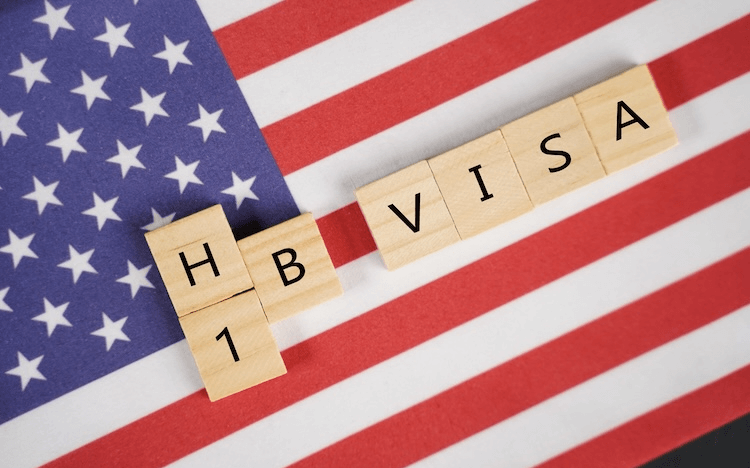H-1B Visa Guide: Everything You Need to Know – Basics, Facts, and Key Insights
The H-1B visa is a non-immigrant work visa issued by the United States government, allowing U.S.-based employers to temporarily hire foreign workers in specialty occupations. These jobs typically require specialized knowledge and a bachelor’s degree or higher in fields such as IT, finance, engineering, science, or healthcare.
Introduced under the Immigration Act of 1990, the H-1B visa was designed to help fill skill gaps in the American workforce by allowing U.S. companies to recruit global talent. Every year, tens of thousands of professionals from countries like India, China, Canada, and the UK apply for the H-1B program, hoping to work and gain experience in the United States.

Why the H-1B Visa Matters Today
The H-1B visa plays a significant role in the U.S. economy and global talent mobility. It’s particularly vital in industries like technology, healthcare, and education, where employers often struggle to find local candidates with specific qualifications or experience.
Who benefits from the H-1B program?
-
U.S. companies: Especially in tech hubs like Silicon Valley, companies rely on the program to attract top-tier engineers and developers.
-
International professionals: It offers a pathway to gain U.S. work experience, build a global resume, and potentially transition to permanent residency (green card).
-
American economy: It helps drive innovation and fills labor shortages in critical fields.
Without the H-1B program, many businesses would face delays in product development, research, and service delivery due to staffing limitations.
Recent Changes and Trends
The H-1B program has seen several updates over the past year to improve transparency, reduce fraud, and prioritize high-skilled talent.
Key updates include:
| Update Date | Change Summary |
|---|---|
| March 2024 | USCIS launched a new online system for H-1B registrations to streamline the lottery process and reduce multiple entries by the same employer. |
| April 2024 | The annual H-1B lottery cap remained at 85,000 (65,000 general cap and 20,000 for U.S. master's degree holders), but new fraud detection protocols were added. |
| October 2024 | New prevailing wage rules were proposed to better align salaries of H-1B workers with U.S. labor standards. |
| January 2025 | DHS announced stricter reviews of third-party worksite arrangements, increasing compliance checks and site visits. |
These changes reflect a broader effort to enhance program integrity while maintaining fair access for skilled workers.
Key U.S. Laws and Government Regulations Impacting H-1B Visas
The H-1B visa is governed by several U.S. federal laws and policies. Understanding these can help applicants and employers navigate the process more effectively.
Governing bodies and legal foundations:
-
USCIS (U.S. Citizenship and Immigration Services): Primary agency managing H-1B applications and approvals.
-
DOL (Department of Labor): Ensures employers pay H-1B workers prevailing wages and meet labor condition requirements.
-
Immigration and Nationality Act (INA): Establishes the legal framework for temporary work visas.
Notable legal requirements:
-
Labor Condition Application (LCA): Employers must file an LCA with the DOL to demonstrate they’re offering fair wages and working conditions.
-
H-1B Cap: The annual cap limits the number of new visas issued. There are 65,000 standard visas and 20,000 reserved for applicants with a U.S. master’s degree or higher.
-
Maximum stay duration: H-1B holders can stay for up to 6 years (initial 3 years + 3-year extension), though some may extend beyond this if green card processing is underway.
Helpful Tools and Resources for H-1B Applicants and Employers
Navigating the H-1B process can be complex. Fortunately, several online tools and government resources are available to assist applicants, employers, and legal representatives.
Recommended resources:
-
USCIS H-1B Hub
Website: https://www.uscis.gov
Official source for H-1B forms, updates, and processing timelines. -
FLAG System (Foreign Labor Application Gateway)
Website: https://flag.dol.gov
Used by employers to file Labor Condition Applications. -
H1BGrader.com
Offers insights into employer sponsorship history, approval rates, and salary data. -
MyVisaJobs.com
Searchable database for employers, job openings, and H-1B reports. -
US Department of State Visa Bulletin
Tracks green card priority dates and updates on immigration backlogs.
Frequently Asked Questions (FAQs)
1. How does the H-1B lottery system work?
Each March, employers must register prospective candidates in an electronic lottery run by USCIS. If selected, the employer may then file a full H-1B petition. Selection is random unless the applicant qualifies under the master’s degree exemption.
2. Can an H-1B visa holder switch jobs?
Yes. H-1B holders can transfer to a new employer, but the new employer must file a fresh H-1B petition. The worker can begin employment as soon as USCIS receives the new petition, even before it’s approved.
3. Can family members accompany H-1B visa holders?
Yes. Spouses and unmarried children under 21 can apply for the H-4 visa. In some cases, H-4 spouses may qualify for work authorization (EAD) if the H-1B worker is on the path to a green card.
4. What happens after the six-year H-1B limit?
H-1B holders must leave the U.S. or switch to another visa type unless they are in the process of obtaining permanent residency. Extensions beyond six years are possible under AC21 provisions if green card steps have been initiated.
5. What are the common reasons for H-1B denial?
Some common reasons include insufficient evidence of specialty occupation, lack of proper degree credentials, employer ineligibility, or inconsistencies in the worksite arrangement.
Final Thoughts
The H-1B visa remains one of the most sought-after routes for international professionals looking to work in the United States. While the application process can be competitive and legally complex, understanding the basics, recent updates, and available resources can significantly improve your chances of success.
Whether you're an employer trying to hire global talent or a skilled worker planning a career move to the U.S., staying informed about H-1B policies and timelines is essential. With careful planning and the right documentation, the H-1B can serve as a vital step toward professional and personal growth.